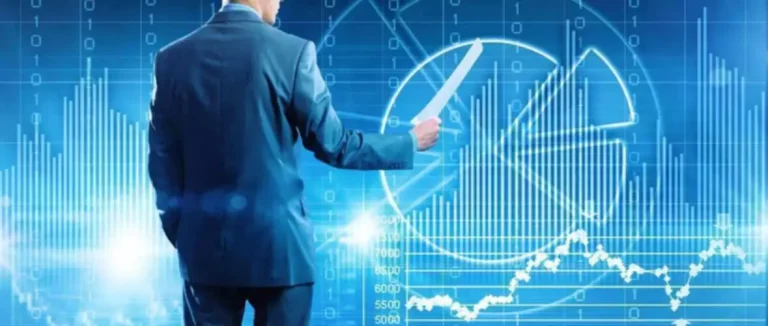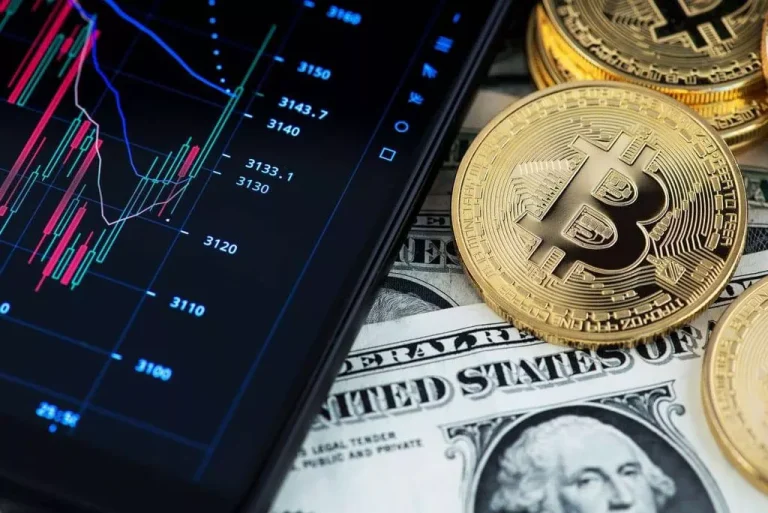This chapter will help you piece together a picture of ML and big data applications in the trading landscape. AI algorithms can identify potential risks and adapt trading strategies accordingly, reducing exposure to market volatility. Risk management techniques, such as stop-loss and profit-taking algorithms, can be integrated into AI-based systems to automatically trigger trades based on predefined risk levels (Stridsman, 2014). AI-driven trading systems can process and analyze large volumes of data in real-time, leading to more precise trading decisions. By reducing human involvement, algorithmic trading powered by AI significantly improves speed and efficiency, thereby reducing trading costs and minimizing human biases (Fischer et al., 2020). In this study, we examine whether these data analytics have any positive contribution to intraday trading strategies.
Algo trading is widely used and successful because it replaces human emotions with data analysis. It assesses the strategy’s practicality and profitability on past data, certifying it for success (or failure or any needed changes). This mandatory feature also needs to be accompanied by availability of historical data, on which the backtesting can be performed. Market regulators such as the Bank of England and the European Securities and Markets Authority have published supervisory guidance specifically on the risk controls of algorithmic trading activities, e.g., the SS5/18 of the Bank of England, and the MIFID II.
Transaction cost reduction
Each piece of data is assigned to a firm resource according to the resource-based view. Then, U-XBRL standardizes the information according to data standards and feeds it to a central repository. This repository is primarily organized through XBRL tags and is governed secondarily by other standards and taxonomies. A number of applications can be used individually to select data from the repository for analysis. Using U-XBRL the recognition, monitoring, and assurance of resources are streamlined. The increasing volume of market data poses a big challenge for financial institutions.
Big data continues to transform the landscape of various industries, particularly financial services. Many financial institutions are adopting big data analytics in order to maintain a competitive edge. Through structured and unstructured data, complex algorithms can execute trades using a number of data sources. Human emotion and bias can be minimized through automation; however, trading with big data analysis has its own specific set of challenges The statistical results produced so far have not been fully embraced due to the field’s relative novelty. However, as financial services trend towards big data and automation, the sophistication of statistical techniques will increase accuracy. Big data and artificial intelligence [AI] integration are key to the success of algo software for trading in the future.
Parallel to these arguments, in this study, we focus on the potential benefits of financial big data analytics in stock market trading. In particular, we focus on Borsa Istanbul (Istanbul Stock Exchange) and consider its recent product called ’real time data analytics’ to examine whether it can help investors exploit intraday pricing inefficiencies. It is known that high-frequency trading dominates market activity, leaving little space for retail day trades.
A trader on one end (the “buy side”) must enable their trading system (often called an “order management system” or “execution management system”) to understand a constantly proliferating flow of new algorithmic order types. The R&D and other costs to construct complex new algorithmic orders types, along with the execution infrastructure, and marketing costs to distribute them, are fairly substantial. The volume a market big data forex trading maker trades is many times more than the average individual scalper and would make use of more sophisticated trading systems and technology. However, registered market makers are bound by exchange rules stipulating their minimum quote obligations. For instance, NASDAQ requires each market maker to post at least one bid and one ask at some price level, so as to maintain a two-sided market for each stock represented.
Pros & Cons of Algorithmic Trading
Within those split seconds, a HFT could have executed multiple traders, profiting from your final entry price. It can be tough for traders to know what parts of their trading system work and what doesn’t work since they can’t run their system on past data. With algo trading, you can run the algorithms based on past data to see if it would have worked in the past.
This ability provides a huge advantage as it lets the user remove any flaws of a trading system before you run it live. Algorithmic trading has been shown to substantially improve market liquidity[76] among other benefits. However, improvements in productivity brought by algorithmic trading have been opposed by human brokers and traders facing stiff competition from computers.
If for some reason the market falls slightly and a sell order is triggered to cut loss at once, prices can immediately collapse because there are no buyers in the market. Famous examples of crashes occurred in 1987 stock market, in 2010 flash crash and many more. If you see the price of a Chanel bag to be US$5000 in France and US$6000 in Singapore, what would you do? This is risk free profit at no cost, by earning a spread between the 2 countries. Similarly, if one spots a price difference in futures and cash markets, an algo trader can be alerted by this and take advantage. A trader may be simultaneously using a Bloomberg terminal for price analysis, a broker’s terminal for placing trades, and a MATLAB program for trend analysis.
Convolutional Neural Networks (CNN) and Recurrent Neural Networks (RNN) are frequently employed in algorithmic trading to process and analyze sequential financial data, such as stock prices or trading volumes (Fischer et al., 2020). To tackle this problem, organizations have started to direct their attention to the statistics within big data, or so-called analytics. Big data analytics is a key ingredient used to analyze big data through various techniques ranging from simple regression analysis to complex approaches such as data mining, artificial intelligence, language processing, machine learning, and others. These analytics aim to improve the predictions and, therefore, decisions of the organizations.
III. Trading with Machine Learning and Big Data
Algorithmic trading, also known as algo trading or black-box trading, refers to the use of computer algorithms to automate the process of buying and selling financial instruments in global markets. Indeed, gigantic data supply in the “Age of Data” from all sources that we use and share are growing at an unforeseeable rate (McAfee and Brynjolfsson, 2012). Global digital information capaciousness is expected to be around 44 zettabytes in 2020, which is 40 times larger than the number of stars in the universe, resulting in an enormous amount of data which is usually called it “big data”.
- The complex event processing engine (CEP), which is the heart of decision making in algo-based trading systems, is used for order routing and risk management.
- This creates profitable opportunities for algorithmic traders, who capitalize on expected trades that offer 20 to 80 basis points profits depending on the number of stocks in the index fund just before index fund rebalancing.
- This could allow for the modernization of assurance, where applications from many vendors (Dai, 2017) could be used for audit purposes.
- Stock reporting services (such as Yahoo! Finance, MS Investor, Morningstar, etc.), commonly offer moving averages for periods such as 50 and 100 days.
The gradual but marked decline in the correspondence between aggregated accounting numbers and market valuations, such as stock returns, is a well-documented phenomenon in the research literature (Lev and Zarowin, 1999). Rapid advances in technology have paved the way for the collection of unprecedented volumes of data. Currently, the slow speed of information dissemination, laggard accounting systems, and a focus on high levels of aggregation are perhaps the largest contributors to waning relevance of financial reporting.
However, C or C++ are both more complex and difficult languages, so finance professionals looking entry into programming may be better suited transitioning to a more manageable language such as Python. Some investors may contest that this type of trading creates an unfair trading environment that adversely impacts markets. The defined sets of instructions are based on timing, price, quantity, https://www.xcritical.com/ or any mathematical model. Apart from profit opportunities for the trader, algo-trading renders markets more liquid and trading more systematic by ruling out the impact of human emotions on trading activities. Until the trade order is fully filled, this algorithm continues sending partial orders according to the defined participation ratio and according to the volume traded in the markets.
Over the past few years, 90 percent of the data in the world has been created as a result of the creation of 2.5 quintillion bytes of data on a daily basis. Commonly referred to as big data, this rapid growth and storage creates opportunities for collection, processing, and analysis of structured and unstructured data. The information is presented without consideration of the investment objectives, risk tolerance, or financial circumstances of any specific investor and might not be suitable for all investors. There are additional risks and challenges such as system failure risks, network connectivity errors, time-lags between trade orders and execution and, most important of all, imperfect algorithms. The more complex an algorithm, the more stringent backtesting is needed before it is put into action.
Just to get 100 intra-day scenarios for buying or selling an instrument, there has to about a million calculations. It has to be done so fast that trade actions should be generated in near real-time. Algorithmic trading is essentially this step wherein within a short time period the algo trading companies evaluate and generate the trade action. Buying a dual-listed stock at a lower price in one market and simultaneously selling it at a higher price in another market offers the price differential as risk-free profit or arbitrage. The same operation can be replicated for stocks vs. futures instruments as price differentials do exist from time to time.
Unlocking the Marvelous Potential of Consciousness
Usually the market price of the target company is less than the price offered by the acquiring company. The spread between these two prices depends mainly on the probability and the timing of the takeover being completed, as well as the prevailing level of interest rates. The bet in a merger arbitrage is that such a spread will eventually be zero, if and when the takeover is completed. The success of these strategies is usually measured by comparing the average price at which the entire order was executed with the average price achieved through a benchmark execution for the same duration. At times, the execution price is also compared with the price of the instrument at the time of placing the order.



